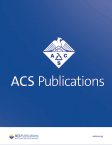Abstract PO2-07-12: Analysis Of Malignity Rates Of Percutaneous Biopsy In Lymph Nodes Of Breast Cancer Patients
IF 3.4
Q2 PUBLIC, ENVIRONMENTAL & OCCUPATIONAL HEALTH
引用次数: 0
Abstract
BACKGROUND: The evaluation of regional lymph nodes in patients with breast cancer is one of the main predictive and prognostic factors for treatment. The methods of percutaneous biopsies of suspicious lymph nodes frequently used are fine-needle aspiration cytology (FNA) and core needle biopsy (CORE). According to the international literature, CORE and FNA are considered diagnostic methods with high specificity (98% vs. 99%), however, the FNA may present up to 21% of inconclusive results by insufficient material. Although CORE is well established as a percutaneous method for diagnostic evaluation of suspected breast lesions, the literature is scarce on the use of this technique for the evaluation of suspicious lymph nodes in breast cancer patients. OBJECTIVE: Analyze the positivity of FNA and CORE performed in suspicious lymph nodes for breast cancer metastasis according to the anatomical location of biopsies and the type of needle used, verifying which technique was preferred. METHODS: A retrospective study was conducted by evaluating the database of patients treated in a public hospital in São Paulo, Brazil. Women submitted to ultrasound-guided percutaneous biopsy of lymph nodes from May 2015 to November 2019 were included in the study. The data were analyzed using IBM-SPSS version 27 and Microsoft EXCEL version 2010. RESULTS: A total of 499 biopsies were performed and the mean age of the women was 54.2 years (SD± 11.9) in the CORE group and 53.4 years (SD± 11.8) in the FNA group (p=0.619). According to the anatomical location, 385 were axillary (77.2%), 62 supraclavicular (12.4%), 48 cervical (9.6%) and 4 infraclavicular (0.8%). Regarding the type of needle, 393 were CORE (78.8%) and 106 were FNA (21.2%). When analyzing the results of the FNA, 38 (35.8%) did not present enough material, 31 (29.2%) were positive, 32 (30.2%) were negative and 5 (4.8%) showed atypical cells. Among the 393 CORE performed, 255 (64.9%) were positive, 132 (33.6%) were negative, 1 (0.3%) showed atypical cells and 5 (1.3%) had no representative material. No complications were reported after the procedures. CONCLUSION: CORE was the preferred diagnostic technique in our center, being considered a feasible procedure to evaluate lymph nodes in different sites and with low rates of inconclusive results by insufficient material. In the future, studies evaluating indirect costs may confirm the feasibility of CORE in patients with suspicious lymph nodes in terms of obtaining greater agility and resolutive conducts in the public healthcare system. Citation Format: Marina Diogenes, Andressa Amorim, ANDRE MATTAR, MARCELO ANTONINI, Luiz Henrique Gebrim, REGINALDO COELHO LOPES, Luciana Damous. Analysis Of Malignity Rates Of Percutaneous Biopsy In Lymph Nodes Of Breast Cancer Patients [abstract]. In: Proceedings of the 2023 San Antonio Breast Cancer Symposium; 2023 Dec 5-9; San Antonio, TX. Philadelphia (PA): AACR; Cancer Res 2024;84(9 Suppl):Abstract nr PO2-07-12.摘要 PO2-07-12:乳腺癌患者淋巴结经皮活检恶变率分析
背景:对乳腺癌患者的区域淋巴结进行评估是预测治疗效果和预后的主要因素之一。常用的经皮活检可疑淋巴结的方法是细针穿刺细胞学检查(FNA)和核心针活检(CORE)。根据国际文献,CORE 和 FNA 被认为是特异性较高(98% 对 99%)的诊断方法,但 FNA 可能会因材料不足而出现高达 21% 的不确定结果。虽然 CORE 作为经皮方法对可疑乳腺病变进行诊断评估已得到广泛认可,但使用该技术对乳腺癌患者的可疑淋巴结进行评估的文献却很少。目的:根据活检的解剖位置和所用针头的类型,分析 FNA 和 CORE 在乳腺癌转移可疑淋巴结中的阳性率,验证哪种技术更受欢迎。方法:通过评估巴西圣保罗一家公立医院的患者数据库,进行了一项回顾性研究。研究纳入了2015年5月至2019年11月期间接受超声引导下经皮淋巴结活检的女性患者。数据使用 IBM-SPSS 27 版和 Microsoft EXCEL 2010 版进行分析。结果:共进行了499例活检,CORE组妇女的平均年龄为54.2岁(SD± 11.9),FNA组妇女的平均年龄为53.4岁(SD± 11.8)(P=0.619)。根据解剖位置,385 例为腋窝(77.2%),62 例为锁骨上(12.4%),48 例为颈椎(9.6%),4 例为锁骨下(0.8%)。在穿刺针类型方面,393 例为 CORE(78.8%),106 例为 FNA(21.2%)。在对 FNA 结果进行分析时,38 例(35.8%)未显示足够的材料,31 例(29.2%)为阳性,32 例(30.2%)为阴性,5 例(4.8%)显示非典型细胞。在 393 例 CORE 中,255 例(64.9%)呈阳性,132 例(33.6%)呈阴性,1 例(0.3%)显示非典型细胞,5 例(1.3%)没有代表性材料。术后无并发症报告。结论:CORE是本中心首选的诊断技术,被认为是评估不同部位淋巴结的可行方法,因材料不足而导致不确定结果的比例较低。未来,对间接成本的评估研究可能会证实 CORE 对可疑淋巴结患者的可行性,从而在公共医疗系统中获得更大的灵活性和解决能力。引用格式:玛丽娜-迪奥吉尼斯、安德雷莎-阿莫林、安德烈-马塔尔、马塞洛-安东尼尼、路易斯-恩里克-格布里姆、雷金纳尔多-科埃略-洛佩斯、卢西亚娜-达穆斯。乳腺癌患者淋巴结经皮活检恶性率分析[摘要]。见:2023 年圣安东尼奥乳腺癌研讨会论文集;2023 年 12 月 5-9 日;德克萨斯州圣安东尼奥。费城(宾夕法尼亚州):AACR; Cancer Res 2024;84(9 Suppl):Abstract nr PO2-07-12.
本文章由计算机程序翻译,如有差异,请以英文原文为准。
求助全文
约1分钟内获得全文
求助全文
来源期刊

ACS Chemical Health & Safety
PUBLIC, ENVIRONMENTAL & OCCUPATIONAL HEALTH-
CiteScore
3.10
自引率
20.00%
发文量
63
期刊介绍:
The Journal of Chemical Health and Safety focuses on news, information, and ideas relating to issues and advances in chemical health and safety. The Journal of Chemical Health and Safety covers up-to-the minute, in-depth views of safety issues ranging from OSHA and EPA regulations to the safe handling of hazardous waste, from the latest innovations in effective chemical hygiene practices to the courts'' most recent rulings on safety-related lawsuits. The Journal of Chemical Health and Safety presents real-world information that health, safety and environmental professionals and others responsible for the safety of their workplaces can put to use right away, identifying potential and developing safety concerns before they do real harm.
 求助内容:
求助内容: 应助结果提醒方式:
应助结果提醒方式:


